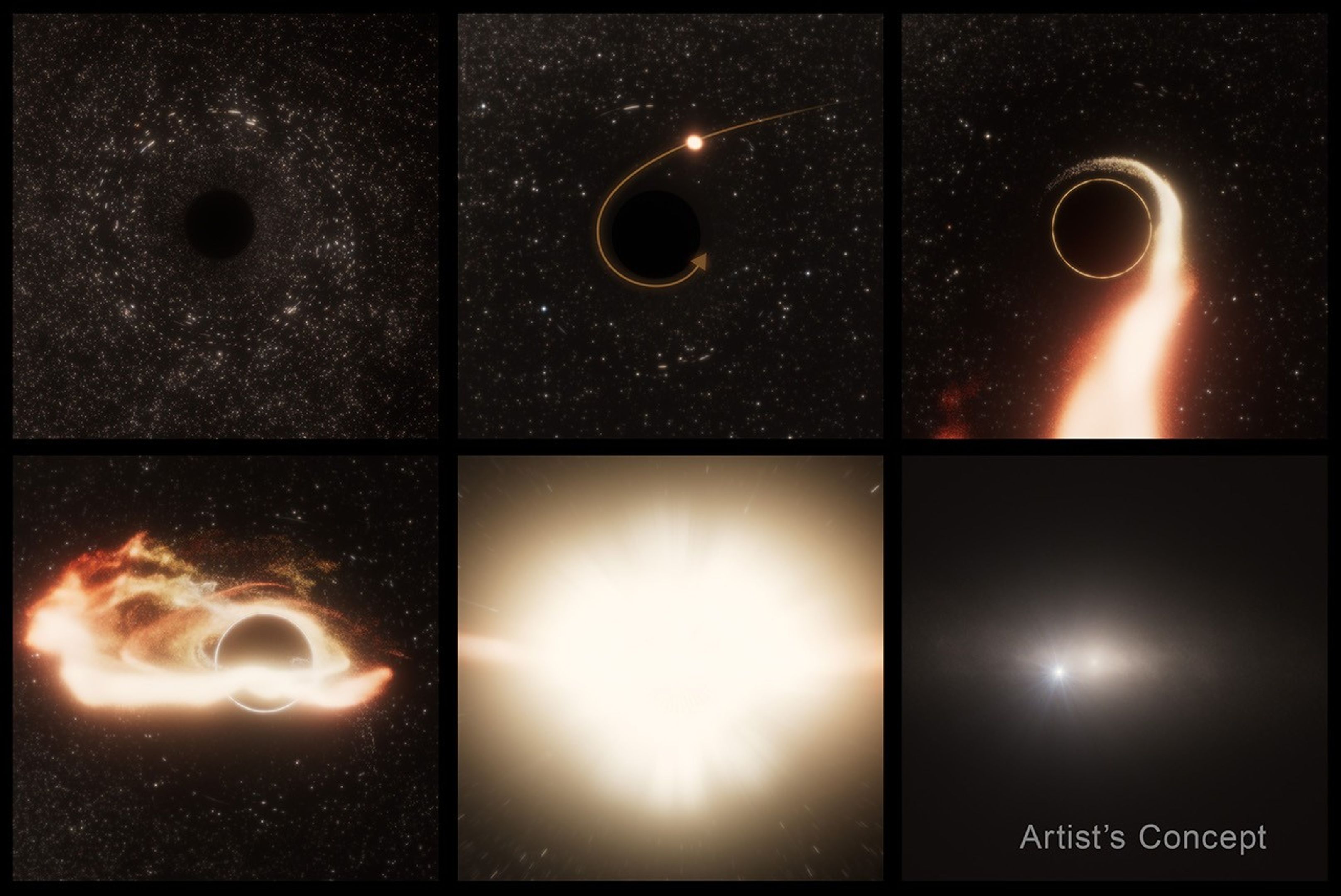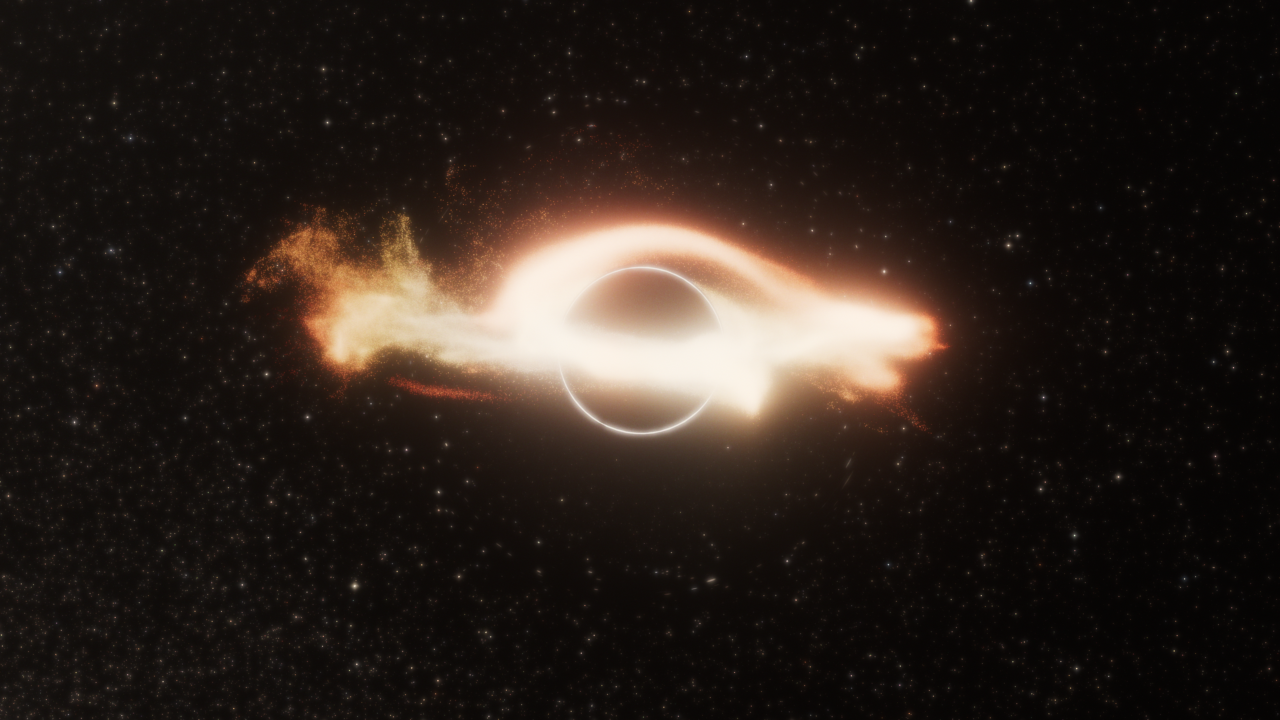1 min read
Black Hole TDE AT2024tvd

This is a Hubble Space Telescope image of galaxy located 600 million light-years away that is host to the telltale signature of a roaming supermassive black hole. Visible in the Hubble image is a tidal disruption event (TDE), an intense flash of radiation caused by the supermassive black hole eating a star. The TDE appears as an isolated blue point source of ultraviolet light, while the galaxy is colored orange in visible light. The source is one of the first examples of a TDE significantly offset from the host galaxy's core by 2,600 light-years – where an even more massive active black resides. Hubble's precise angular resolution clearly shows this offset and confirms independent observations made with NASA's Chandra X-ray observatory. The photo taken on January 16, 2025 with Hubble's WFC3 detector in UV and visible light wavelengths.
About the Object
- R.A. PositionR.A. PositionRight ascension – analogous to longitude – is one component of an object's position.17:10:42.58
- Dec. PositionDec. PositionDeclination – analogous to latitude – is one component of an object's position.+28:50:15.13
- ConstellationConstellationOne of 88 recognized regions of the celestial sphere in which the object appears.Hercules
- DistanceDistanceThe physical distance from Earth to the astronomical object. Distances within our solar system are usually measured in Astronomical Units (AU). Distances between stars are usually measured in light-years. Interstellar distances can also be measured in parsecs.About 600 million light-years
- DimensionsDimensionsThe physical size of the object or the apparent angle it subtends on the sky.The image is about 25 arcseconds across (about 73,000 light-years)
About the Data
- Data DescriptionData DescriptionProposal: A description of the observations, their scientific justification, and the links to the data available in the science archive.
Science Team: The astronomers who planned the observations and analyzed the data. "PI" refers to the Principal Investigator.The Hubble observations include those from program 17894 (Y. Yao)
- InstrumentInstrumentThe science instrument used to produce the data.WFC3/UVIS
- Exposure DatesExposure DatesThe date(s) that the telescope made its observations and the total exposure time.16 January 2025
- FiltersFiltersThe camera filters that were used in the science observations.F275W, F625W
- Object NameObject NameA name or catalog number that astronomers use to identify an astronomical object.AT2024tvd
- Object DescriptionObject DescriptionThe type of astronomical object.Black Hole Tidal Disruption Event
- Release DateMay 8, 2025
- Science ReleaseNASA’s Hubble Pinpoints Roaming Massive Black Hole
- CreditScience: NASA, ESA, STScI, Yuhan Yao (UC Berkeley); Image Processing: Joseph DePasquale (STScI)

These images were acquired by the WFC3 Instrument on the Hubble Space Telescope. The color results from assigning different hues (colors) to a monochromatic (grayscale) image. In this case, the assigned colors are: Cyan: F275W, Orange: F625W

Related Images & Videos
Share
Details
Claire Andreoli
NASA’s Goddard Space Flight Center
Greenbelt, Maryland
claire.andreoli@nasa.gov


































